If you’ve ever suffered from an unknown ailment or illness and, later, found out someone else you know had that thing—and not only had it, but had a name for it—you’ll probably understand how I felt when I heard the term “UX Writer.” In my case, a light shone down from the heavens and a choir sang.
Or something like that.
Once I understood what a UX writer is, the edges of my world seemed a little sharper. Things snapped into focus a bit more. Yet, despite all this clarity, one thing keeps bothering me. I keep returning to one important question:
Shouldn’t all copywriters understand UX?
The short answer, in my opinion, is yes. Let me explain myself…
UX Writing Isn’t About Writing At All
For the uninitiated among us, UX stands for user experience. UserTesting.com says UX is “the internal experience that a person has as they interact with every aspect of a company’s products and services.”
“…as they interact with every aspect of a company’s products and service.”
Every. Aspect.
I never thought of myself as a UX writer because, I guess, I never knew there needed to be such a distinction. As far as I’m concerned, any copywriter worth his salt needs to account for customer interactions throughout the experience, whether that’s on a website, within an application, or anywhere else. I mean, what the hell are you writing for if not to improve the customer’s experience?
But here’s where I think we can refine things a bit. Copywriting isn’t writing at all; it’s simply a thinking process.
Much like design, it’s the anticipation of a need or the addressing of a fear. It’s a process for predicting and guiding behavior. It’s a map of the conversation a customer is already having with themselves. So, yes, of course copywriting requires an understanding of UX. In fact, it’s imperative.
As copywriters, we strive to give a reader the sense that they’ve come to the right place. That our product or our service can help them become whomever it is they seek to become. Better. Faster. Wiser.
We create emotion. Sometimes it’s delight. Sometimes it’s relief. Sometimes it’s a sense of fun or a jolt of confidence. We show them that despite their fear of trying something new, purchasing something unknown, sticking their neck out, that this is right.
When you’re able to transform common interactions into authentic connection using simple, human language, you begin to establish trust. It’s not immediate, but it does have a compounding effect. Start small and it builds upon itself.
But a writer can’t get there if he doesn’t understand UX first. And that happens in two different ways:
- By becoming a customer
- By talking to existing customers
Working With a Designer
Most designers want to lead with design. And most copywriters want to lead with copy. Of course, I’m in the second camp. But with one strong caveat: only if that writer understands UX and design in the first place.
It makes zero sense for a copywriter to write a single word if they don’t first understand the customer journey, the ideal customer, what actual paying customers have to say, and all of the touchpoints a customer will encounter along the way to a purchase (and after purchase, for that matter).
Designers often have this work done. It makes sense for copywriters and designers to work hand in hand, then.
At the beginning of every engagement, I ask for an introduction to the designer who will put it all together. This is critical for a couple of reasons 1) I want to make sure we’re both on the same page. 2) I want to develop a rapport up front to make feedback and changes go better, and 3) I want to be sure I have some influence on design based on my customer research and feedback.
I’ve been in situations where there’s a “middleman” passing information between copywriter and designer, and inevitably, things get lost in translation. It’s best to put the two in direct contact and let them co-lead the redesign process together. This way, they can share information, best practices, and research to garner you the best possible results.
Understanding UX Builds Trust
While growth and revenue drive many business decisions, copy and design should be driven solely by customer experience and the emotions needed to navigate that experience.
Potential customers don’t care about your growth goals or how awesome your newest feature is. They only want to know why they should invest their time and money in you. And underlying that, why it’s a safe and wise decision to do so.
A clear understanding of the user experience is the best way to speak to these emotions. Thankfully, lots of companies are doing this well these days—Dropbox, Slack, and Mailchimp to name a few.
But let me give you a recent, personal example of a company who clearly gets their customers, and demonstrates so through their copy: Biteable.
Biteable allows users to quickly make animated marketing videos with custom copy for free. You can even change the color schemes and choose your own music with a few clicks. I first encountered them in a friend’s social media feed and decided to set up an account, not knowing what to expect. (As a copywriter, I always try to examine that first time experience, so I can empathize with it later while working on a client’s copy.)
Aside from being super easy to use, Biteable’s copy nailed one of the most anxiety-producing parts of the creation process: the video rendering. No one likes to wait and watch the spinning wheel of death, wondering if they screwed up.
Based on what I saw, their copywriter and designer clearly have a grasp of where people get tripped up the most, the questions they’re asking in their heads, and the anxiety a user experiences for the first time. They know people have the most questions and concerns just before they get the final version of their video. Did I do it right? Will it work? Why is it taking so long?
The following are a few screenshots of the video rendering process as I waited for Biteable to show me my creation.
Notice the call to action in the first image says, “REBUILD VIDEO.” That straightforward language tells me exactly what I’m about to do. And it implies that I’m about to trigger a process, subtly signaling I’ll need to wait.

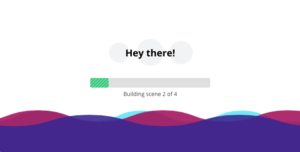
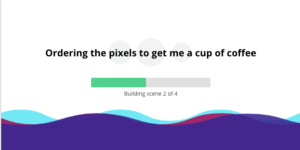
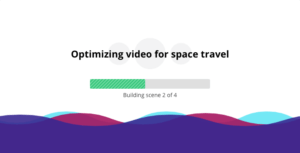
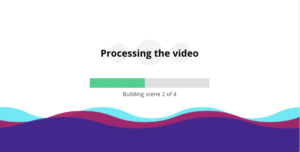
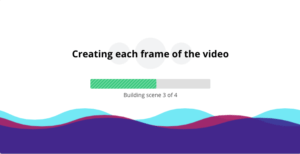
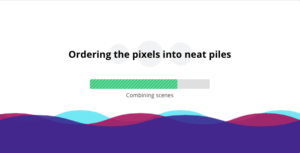
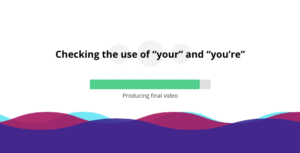
All of the copy that comes after clicking that “rebuild video” button is fun, builds trust, and informs me of the process as it’s happening. It all works—the copy and the design—to reduce my anxiety and make me a smile in the process. It’s brilliantly aligned to the user experience I’m having as a first time user of their platform.
Some might refer to this as “microcopy,” which is fine. But I’d make the same case about that term as I made about “UX writing” earlier—they’re all the same thing. Call it copywriting, microcopy, or UX writing, but at the end of the day, they’re all meant to reduce friction and build trust.
UX Writing Makes Your Copy About the Customer, Not You
UX-focused copy requires you to know your customers inside and out. It’s the only way to get meaningful results.
Which is why I spend the first few weeks of every engagement doing customer research, conducting interviews, mining internet reviews, and gathering as much information about a client’s customer experience as I can. I want to see a designer’s or CMO’s journey map and customer profiles. I want to talk to the head of sales. I want to examine chat logs and speak to customer service reps. I request product demos when there’s one to request. I need to be a customer, to adopt that customer’s mindset as my own.
Only then can I create language that guides a user through the challenging parts of their experience. I can fix areas where people get tripped up. I can find ways to have fun, ease fears, and reduce friction, sometimes all at once.
You can call it what you want, but a rose by any other name would smell as sweet.
_____
Chris Cooper creates customer-driven content for B2B tech and SaaS marketing campaigns. He’s worked with SAP Ariba, Atlantic Metro, GTT, Arrow Electronics, and BrowserStack to create content that engages and converts.
Chris has spoken at Denver Startup Week and has been featured on Confessions of a Pink-haired Marketer, Hot Copy, and Conversion Sciences. He also writes a monthly blog post for Kapost Marketeer. Connect with him on Twitter @ElCoopacabra, LinkedIn, or directly at [email protected]


